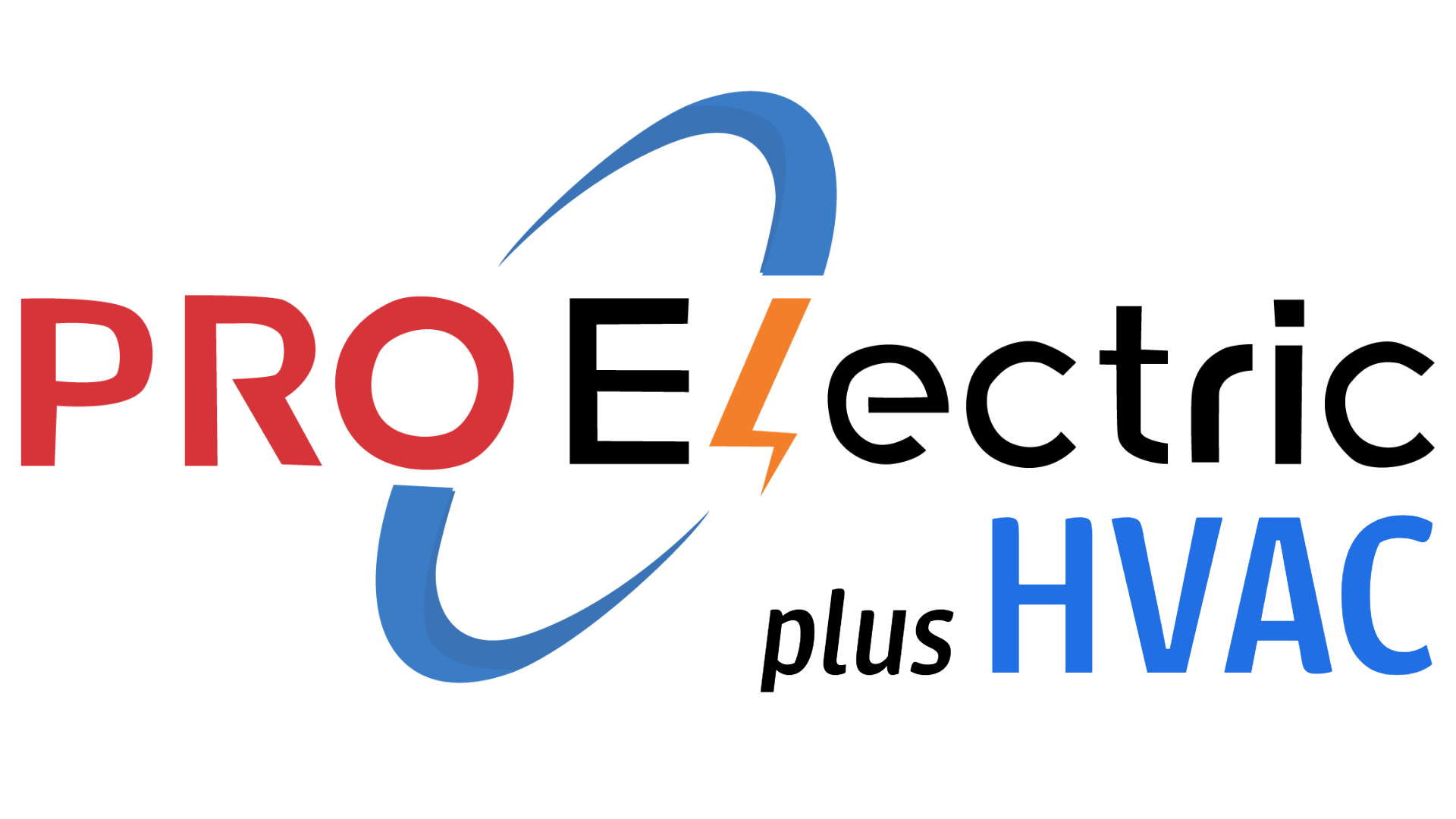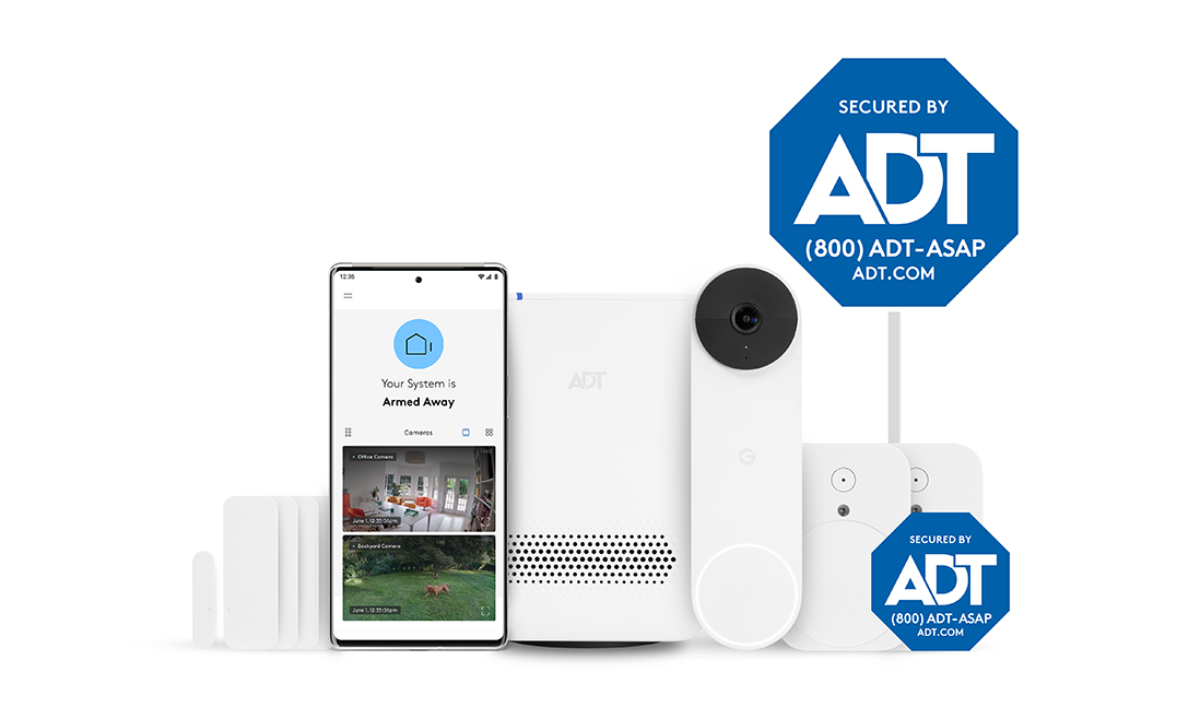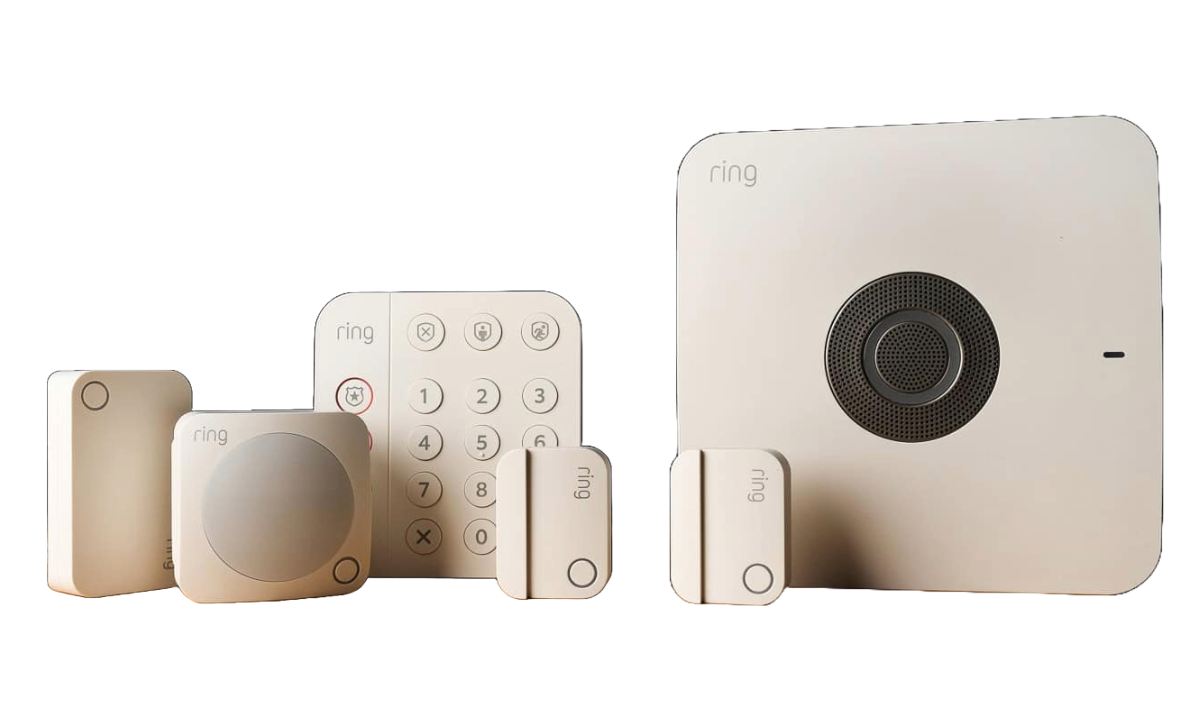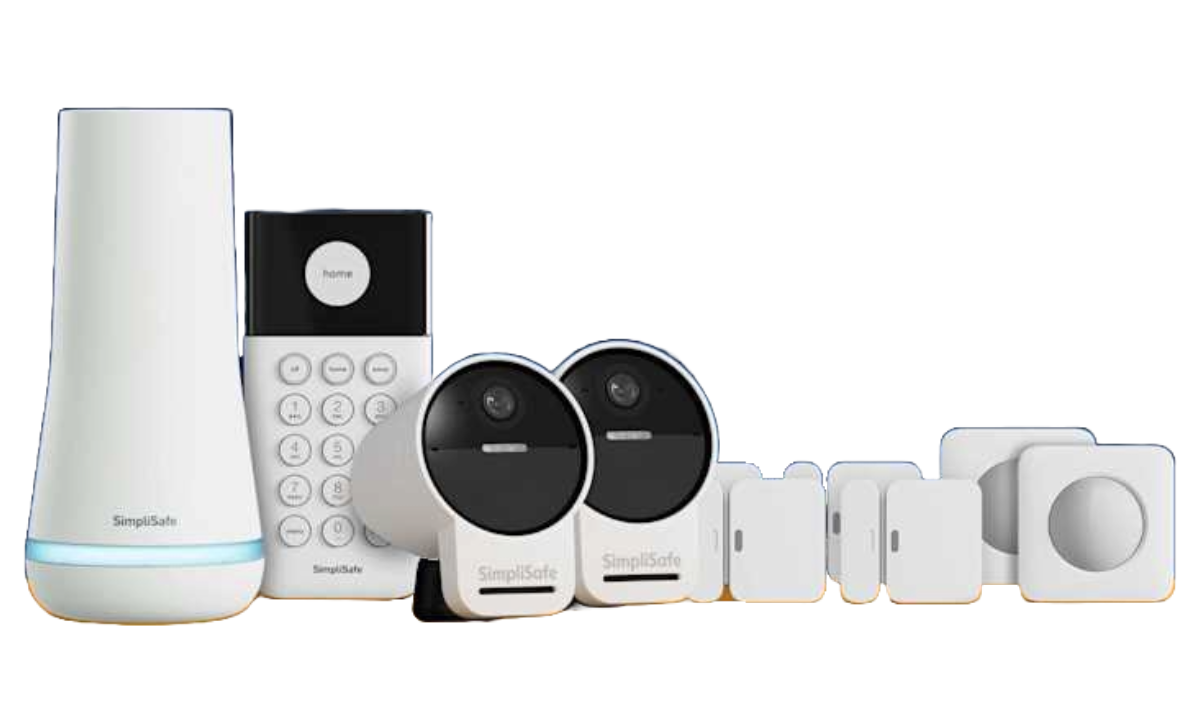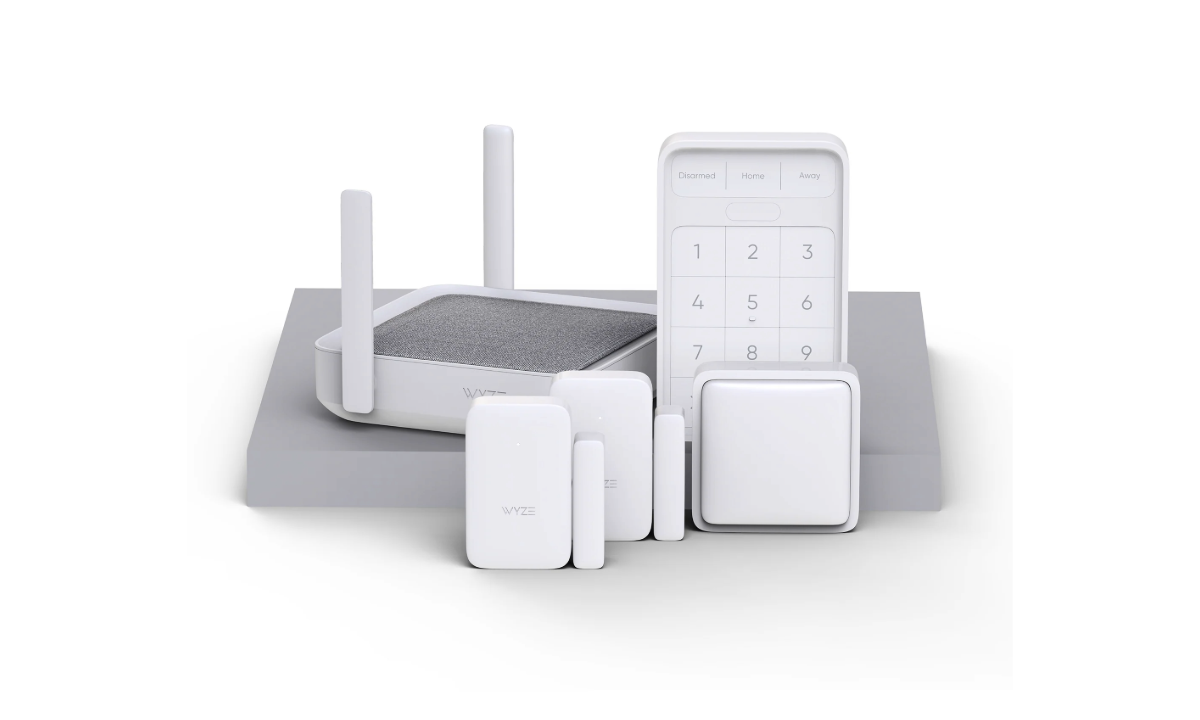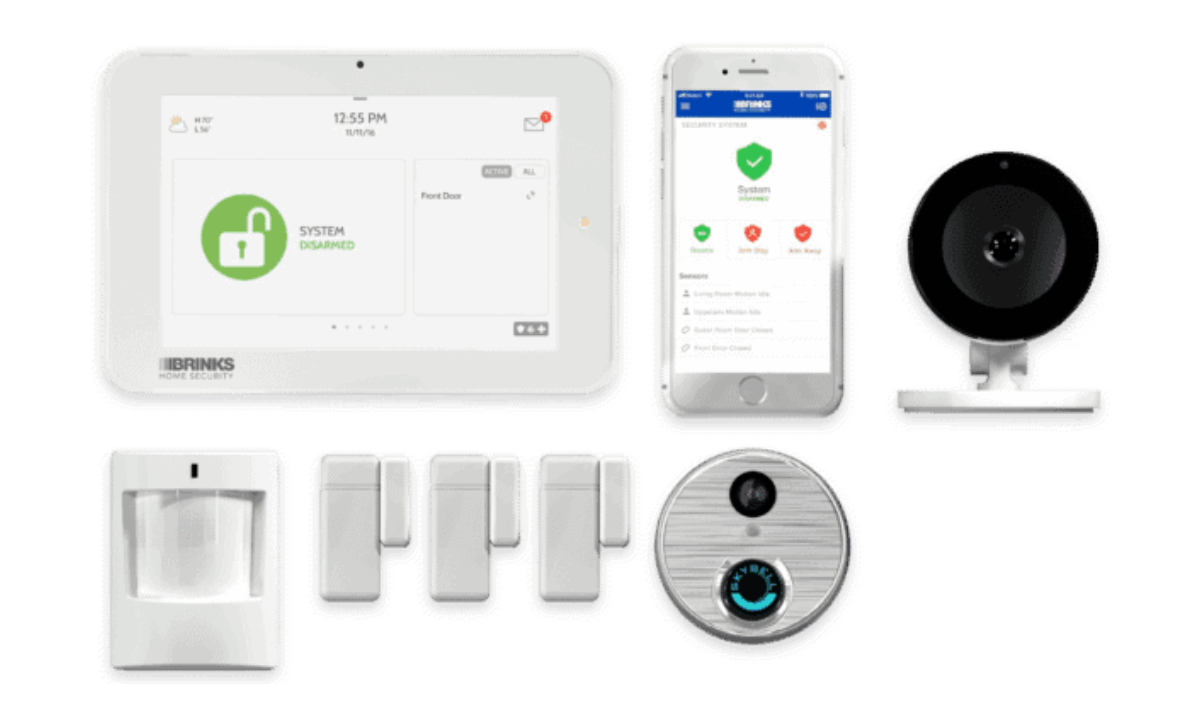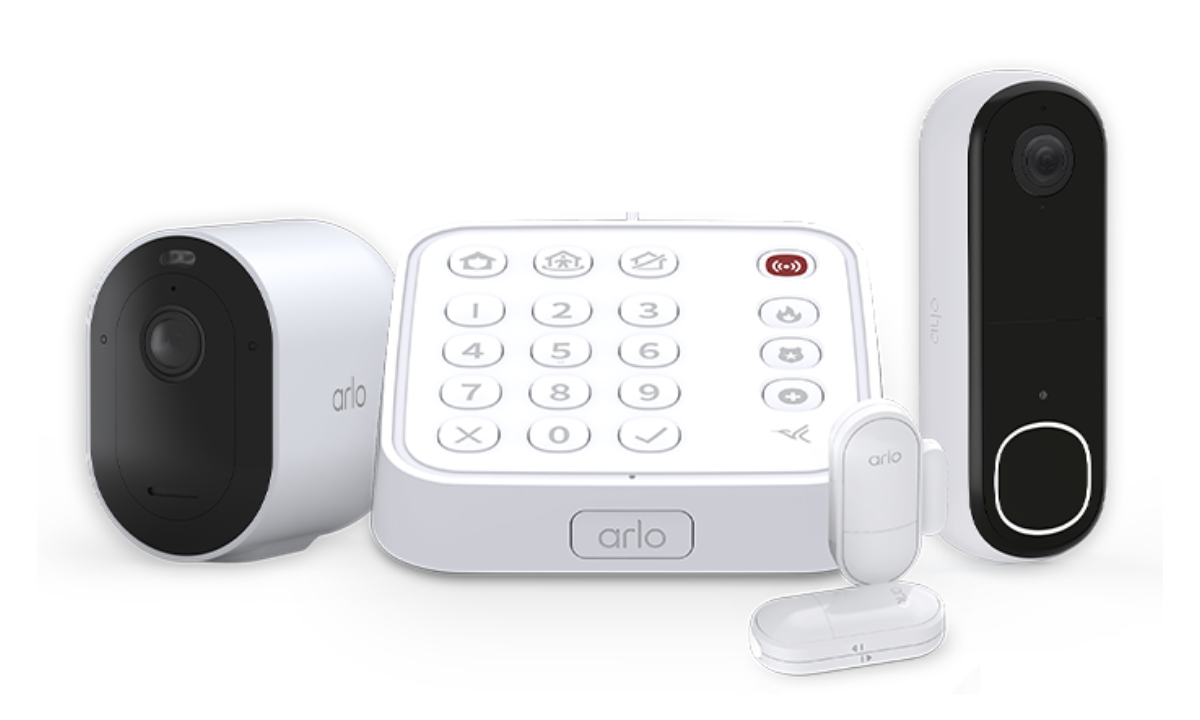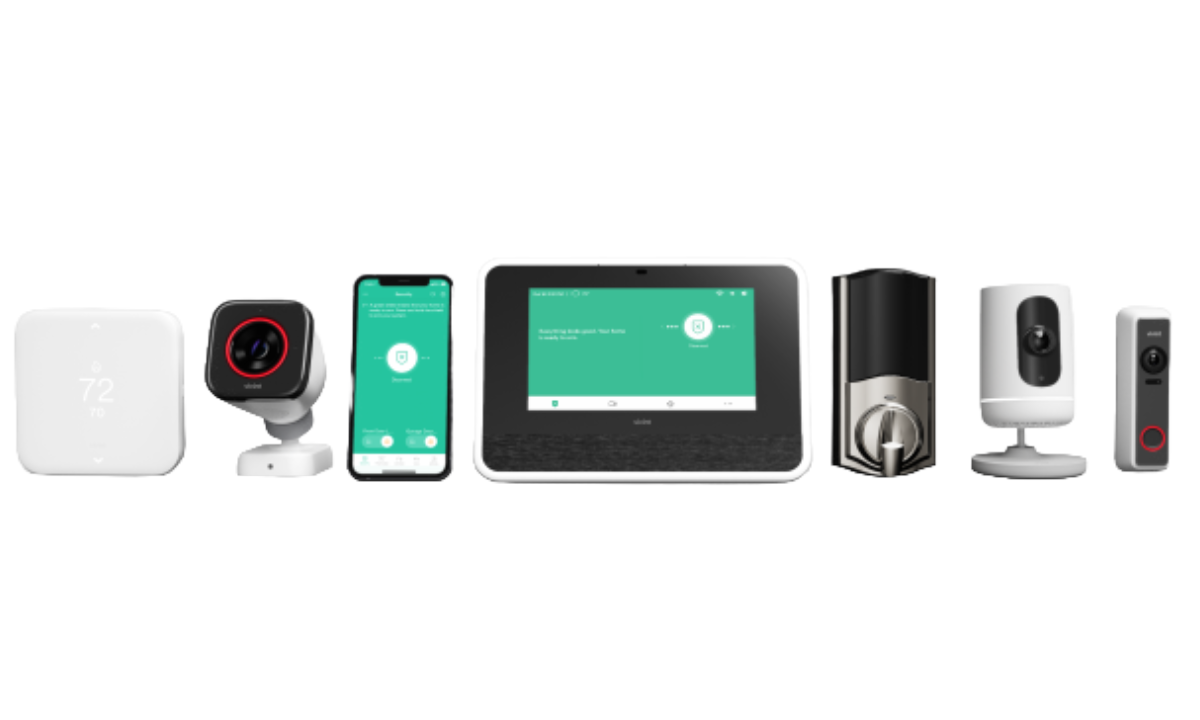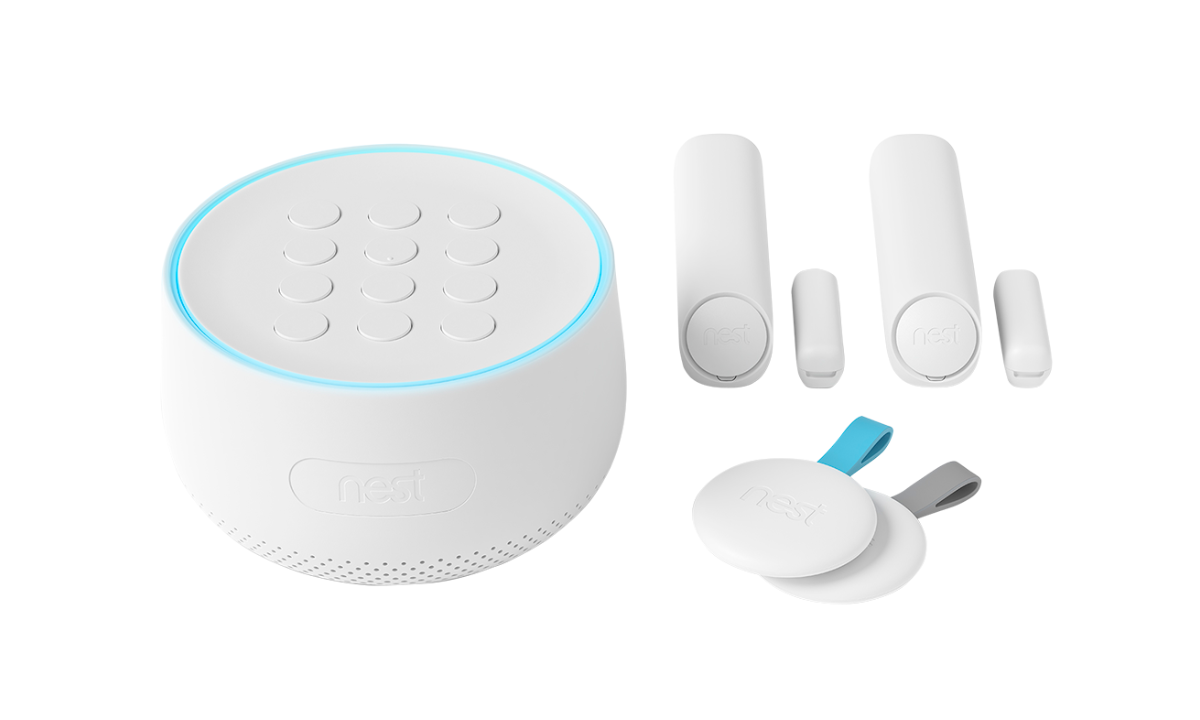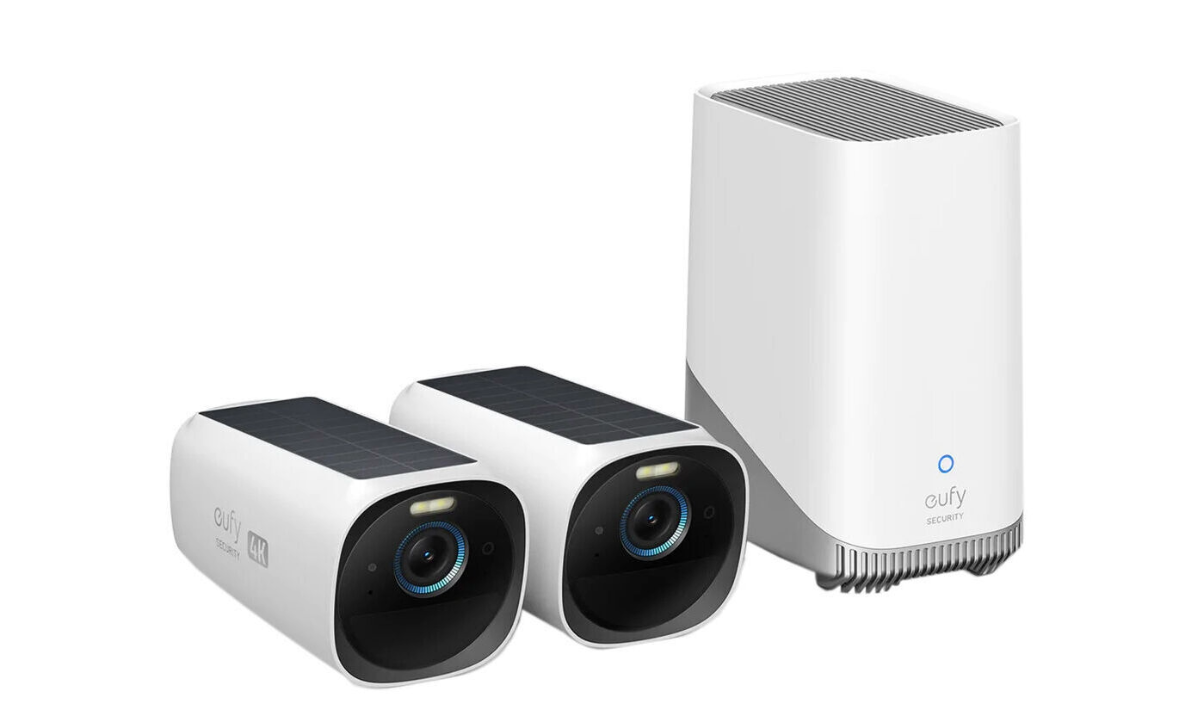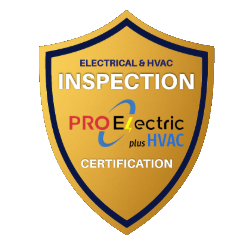Our comprehensive Master Guide on the 10 Best Smart Home Security Systems tailored for homeowners in Loudoun County, Prince William County, and Fairfax County.
This guide will:
- Feature the top 10 smart security systems, comparing features like cameras, motion sensors, smart locks, remote access, and smart home integration.
- Highlight specific benefits, such as monitoring package deliveries, pet supervision, home safety, traveling peace of mind, overseeing housecleaners or service technicians, and keeping an eye on kids.
- Discuss the downside of NOT having a system, including security risks and potential losses.
- Provide a detailed comparison chart with pros, cons, pricing, and features.
- Incorporate local security concerns, using crime statistics and insights specific to Northern Virginia homeowners.
- Include Peter’s insights from PRO Electric plus HVAC, with expert advice and recommendations for installation.
Comparison Chart – Top 10 Smart Home Security Systems
Here’s a quick side-by-side look at our top ten systems, highlighting their pros, cons, pricing, and integration:
Below is the chart in two columns: System on the left, and the combined overview of Key Pros, Key Cons, Pricing, and Integration on the right.
| System | Overview |
|---|---|
| Ring Alarm | Key Pros:- Easy setup- Affordable- Lots of camera/doorbell options- No contracts- Strong Alexa support
Key Cons:- Limited direct integration beyond Alexa- Cloud recording requires subscription- No HomeKit Pricing (Equip. & Monitoring):- Equipment kits from ~$199- Optional monitoring ~$20/mo Integration:- Alexa (native), Basic Google (arm via Assistant)- Z-Wave locks/lights (Ring ecosystem)- No HomeKit |
| SimpliSafe | Key Pros:- Simple install and use- No long-term contract- Reliable 24/7 monitoring- Battery/cell backupKey Cons:- Limited smart home support (Alexa/Google only)- App control requires subscription- Cameras are mediocrePricing (Equip. & Monitoring):- Kits ~$250- Monitoring $18–$28/mo (no contract)Integration:- Alexa, Google (voice control)- Works with August Lock– No HomeKit/Z-Wave/IFTTT |
| ADT Smart Home | Key Pros:- Trusted brand- Professional installation- Rapid-response monitoring- Z-Wave smart home support (locks, lights)
Key Cons:- Expensive ($40–$60/mo)- 3-year contract, cancellation fees- No self-monitor option- No HomeKit Pricing (Equip. & Monitoring):- Often $0–$199 upfront- Monitoring ~$45–$60/mo (36-mo contract) Integration:- Alexa, Google (full voice & routine)- Z-Wave devices (locks, lights, thermostats)- Nest cams/thermostat via ADT+Google- No HomeKit |
| Nest Secure | Key Pros:- Sleek design- Easy tap disarm (Nest Tags)- Built-in Google Assistant– Integrates with Nest cams & locks
Key Cons:- Discontinued in 2020 (support ended 2024)- High cost- Limited device compatibility- No longer available Pricing (Equip. & Monitoring):- Unavailable (was $499 kit)- $19/mo via Brinks (when available) Integration:- Google Assistant (built-in + voice arm)- Nest ecosystem (locks, cams)- No Alexa/HomeKit |
| Vivint Smart Home | Key Pros:- High-end tech (touchscreen panel, AI cameras)- Fully integrated security + home automation- Professional install & support- No-contract if paid upfront
Key Cons:- Very expensive (equip $600–$1500; $40–$50/mo monitoring)- 3–5 year contracts if financing- Past aggressive sales- Closed system for add-ons Pricing (Equip. & Monitoring):- Often financed ($0 down, up to 60 mos.)- Monitoring ~$30–$45/mo (required if financed) Integration:- Alexa, Google (voice control)- Z-Wave devices (locks, lights, thermostats)- Vivint-specific cams, thermostat, car integration- No HomeKit |
| Arlo Security | Key Pros:- Excellent wire-free cameras- Unique 8-in-1 multi-sensor- No contract- Great app- Works with existing Arlo cameras
Key Cons:- New system (less proven)- Limited device types- No HomeKit (natively)- No Z-Wave/Zigbee Pricing (Equip. & Monitoring):- ~$200 starter bundle- Monitoring $24.99/mo (optional, no contract) Integration:- Alexa, Google (voice & display cams)- IFTTT support- Integrates Arlo cams & doorbells- HomeKit (via Arlo base, cameras only) |
| Abode Security | Key Pros:- Best-in-class integration (Alexa, Google, HomeKit, Zigbee, Z-Wave)- No required contract- On-demand pro monitoring- Advanced automation (CUE)
Key Cons:- Higher equipment cost- Abode cameras average- Complex app can overwhelm non-tech users- Smaller company support Pricing (Equip. & Monitoring):- ~$279 kit- Monitoring: $6.99/mo (self w/ cell) or $21.99/mo pro- 3-day/$8 on-demand option Integration:- Alexa, Google, HomeKit (full support)- Z-Wave & Zigbee (locks, lights, etc.)- IFTTT– CUE automation engine |
| Eufy Security | Key Pros:- No monthly fees for full use (local storage)- High-quality 2K/4K cameras with AI (no sub)- Very low-cost monitoring ($5–$10)- Easy setup- Privacy-friendly (data stays local)
Key Cons:- Limited 3rd-party integration (Alexa/Google only)- No HomeKit on alarm- Past cloud security mishaps- Fewer sensor/device types Pricing (Equip. & Monitoring):- ~$150 kit- Monitoring: $4.99/mo (basic) or $9.99/mo (Plus) – no contract Integration:- Alexa, Google (voice arm + camera display)- No direct Z-Wave/Zigbee- Works with Alexa routines- Select cams support HomeKit (not alarm) |
| Brinks Home | Key Pros:- Professional monitoring reliability- Modern touchscreen panel (Alarm.com)- Google/Alexa integration- DIY or pro install- Many sensor types (smoke, CO, etc.)
Key Cons:- 3-year contract typical- Monitoring ~$40+ monthly- Must use Brinks monitoring (no self-monitor)- Some cancellation complaints Pricing (Equip. & Monitoring):- Often $0–$199 upfront (with contract)- Monitoring ~$39–$49/mo (36-mo) Integration:- Alexa, Google (via Alarm.com skill)- Z-Wave devices (locks, lights, thermostats)- Alarm.com ecosystem (similar to ADT)- No HomeKit |
| Wyze Home | Key Pros:- Ultra-affordable equipment & monitoring- Very easy setup- Integrates with Wyze cams in one app- No contract (cancel anytime)- Expandable
Key Cons:- Relies heavily on Wi-Fi (no built-in cell unless you subscribe)- Basic integration (Alexa/Google for arming, camera display)- No Z-Wave/Zigbee- Limited device types (no glass-break sensor) Pricing (Equip. & Monitoring):- ~$80 starter kit- Monitoring: $4.99/mo (annual) or $9.99/mo (monthly) Integration:- Alexa, Google (voice arm/disarm, cam streaming)- Wyze ecosystem (cams, plugs, locks)- No HomeKit/IFTTT- Basic routines via Alexa |
Looking at the chart, you can see how each system has its niche.
Ring vs. Nest vs. SimpliSafe vs. ADT, etc., comes down to what you value: cost, integration, professional service, or DIY flexibility.
Next, let’s talk about why having any of these systems is so important – the local perspective on crime in Fairfax, Loudoun, and Prince William Counties, and how a security system addresses those concerns.
Local Crime Concerns in Northern Virginia (Fairfax, Loudoun & Prince William Counties)
Northern Virginia is generally a safe place to live – our counties often rank among the top for quality of life and low violent crime. But that doesn’t mean we’re crime-free. We do experience property crimes like burglaries, package thefts, and car break-ins. Let’s look at some local crime insights and stats to understand why a security system is a smart investment for area homeowners:
- Burglaries and Break-Ins Happen, Even in Good Neighborhoods: In Fairfax County, there were about 619 burglaries in a recent year (FBI — Virginia) – that averages to roughly 12 per week. Prince William County reported 425 burglaries (FBI — Virginia), and Loudoun had about 136 (Loudoun’s lower, but that’s still over 2 per week) (FBI — Virginia). These include home break-ins. Often, these crimes are crimes of opportunity – e.g., a burglar checking for an unlocked door or a house that looks unoccupied. Without a security system, a thief might spend ample time inside. With an alarm, the siren and (if monitored) quick police dispatch can limit losses or deter the intruder entirely. Many NOVA burglars strike during daytime when residents are at work. Imagine a burglar kicks in your front door at 11 AM – if you have no alarm, they could clean out jewelry and electronics. If you do have an alarm, they have maybe 30 seconds before a deafening siren and the likelihood of police on the way. That’s why even in safe communities like Vienna or Ashburn, police encourage using alarms. It’s also worth noting: homes without security systems are up to 300% more likely to be broken into than those with systems (Home Security 101: Preventing Break-Ins – StaySafe.org). Criminals know to avoid homes with alarms (they’ve literally said so in interviews). Simply put, an alarm system dramatically reduces your risk of being a burglary target.
- Package Theft (“Porch Pirates”) is a Real Issue: With the explosion of Amazon Prime in our region, package thefts have become common. Virginia has seen significant rates – one report noted about a 10% chance of a package being stolen in VA each year. The D.C. metro area ranks among the top regions for porch theft complaints. In our neighborhoods, community message boards frequently have “Someone stole my package” posts. A smart security system with a video doorbell or outdoor camera can mitigate this. You’ll get an alert when a package is delivered and can monitor it. If someone does swipe it, you have video evidence (which you can share with police or post on Neighbors apps to warn others). Better yet, many thieves will avoid a house if they see a camera or know they’re being recorded. And with newer tech like package detection (offered by Ring, Vivint, Arlo cams), your system can even shout a warning or siren when someone approaches a package that’s not theirs (Arlo Home Security System with All-in-One Sensors | 3 or 5-Piece). In short, if you get a lot of deliveries – and who in NOVA doesn’t? – a security cam and alarm sign will make a porch pirate think twice. (It’s worth noting: an estimated 58 million packages worth $12 billion were stolen nationwide last year (2024 Package Theft Annual Report and Statistics | Security.org) – it’s a huge issue that our area is not immune to.)
- Car Thefts and Break-ins: While violent crime is low, property crimes like car break-ins or vehicle tampering happen in Northern Virginia. Just check Nextdoor or Facebook groups – you’ll see posts like “Someone rifled through my unlocked car last night” or “My car’s catalytic converter was stolen.” A security system can help here too. How? Many systems let you add outdoor cameras or driveway sensors. Or in Vivint’s case, their Car Guard sensor can alert you (and even trigger your outdoor cam) if your car is disturbed. In Prince William County, the police reported strings of vehicle break-ins (mostly to unlocked cars) – having a camera or motion-activated light often scares those thieves off. Also, if your car is in the driveway and someone opens the door, an outdoor camera or a window sensor on the car (some folks stick an entry sensor in a classic car) could alert you. This isn’t part of a standard alarm, but many integrate car security now (Vivint, Ring with Car Cam, etc.). Even if you just catch footage of a suspicious person by your cars at 2 AM, that’s valuable.
- Local Police Response Times: Fairfax County police are great, but with no alarm, they rely on someone calling them after a crime is noticed. With a monitored alarm, they get notified immediately – shaving minutes off response. For instance, if a break-in happens at 1 PM on a weekday in Loudoun, without an alarm it might be 5 or 6 PM when you get home and discover it (the thieves long gone). With an alarm, the break-in is detected at 1 PM, police could be there by 1:15, possibly catching the suspects or at least minimizing theft. That’s a huge difference in outcome. Many insurance companies recognize this, which is why they often give you 5–15% home insurance discount for having a monitored alarm. They know it reduces claims.
- Community Watch & Peace of Mind: Northern Virginia communities are tight-knit. An alarm system adds to the overall safety net. For example, if you’re away, you might ask a neighbor to keep an eye out. If your alarm goes off, your system can alert them as a backup contact. I know in my neighborhood in Centreville, a few of us are listed on each other’s alarm contact lists. We’ve literally caught a problem – my neighbor’s alarm sounded while she was traveling, I got the contact call, went over and checked (turned out a pipe burst causing a basement motion detector to go off – we caught a flood early because of that!). Without an alarm, that water would’ve run for days undetected, causing immense damage. So, alarms aren’t just about crime – they often include environmental sensors (freeze, flood, fire). Considering we get cold winters, a freeze sensor tied to your alarm can alert you before a pipe bursts. Or a smoke/CO detector that alerts you (and the fire dept) even if you’re not home – potentially saving your house from major fire damage. Fairfax County Fire and Rescue responds incredibly fast when a monitored smoke alarm call comes in (faster than a neighbor noticing smoke, frankly).
- High-Value Targets: Let’s face it, parts of Fairfax, Loudoun, and PWC are affluent. We have nice homes, cars, and gadgets – which can attract thieves. Places like Great Falls, McLean, Potomac Falls have seen organized burglary crews target high-end homes for jewelry or cash. These crews often bypass houses with alarms and hit those without (law enforcement has noted this pattern). Also, there’s been an uptick in key fob relay thefts (stealing cars by relaying the signal from keys inside the house). An alarm system with door/window sensors and cameras can thwart the entry needed for those attempts, or at least record it. If you have a luxury car in the garage, an alarm on that garage door is extra peace of mind.
- Local Crime Stats Emphasis: The police yearly crime report might show, for example, that Larceny (theft) is one of the most common crimes in Fairfax – thousands of cases. That includes everything from package theft to stealing from homes/garages. A security system directly combats larceny: cameras deter and capture porch thefts, alarms scare off and limit home thefts, and with smart alerts you’re much less likely to be a victim. Also, consider home invasions – rare here, but they have occurred. Having a panic button or alarm siren could be life-saving in such a scenario, immediately summoning help.
Recent Crime Trends & Stats in Arlington County
Overall Property Crime: Arlington’s property crime has ticked up in the past couple of years. In 2022, reported property crimes jumped by about 23% compared to 2021 arlingtonva.us. This was a noticeable increase after a fairly low-crime 2020 (when the pandemic kept many people home). The main drivers were thefts: for instance, larceny (general theft) cases rose roughly 7.4% in 2022 arlnow.com . The trend continued into 2023 but at a slower pace – property crimes were up around 4.8% from 2022 arlnow.com. (So, crime is rising, but not skyrocketing out of control.)
-
Burglaries & Break-ins: Burglaries (home or business break-ins) form a smaller portion of Arlington’s crimes but have shown some fluctuation. Arlington typically sees on the order of a hundred-plus burglaries a year. There was no huge spike in 2022, but in 2023 the police noted an uptick in burglaries (and robberies) contributing to the slight rise in property crime arlnow.com. In short, break-ins haven’t been rampant, but they’re something to keep an eye on. Most burglaries are opportunistic – e.g. someone entering through an unlocked door or window when nobody’s home.
-
Car Thefts: Car thefts have been on the rise both in Arlington and across Virginia. In Arlington, police reported a marked increase in motor vehicle thefts in 2022 arlingtonva.us. This mirrors a statewide trend – Virginia saw about 22% more auto thefts in 2022 than the year prior wtop.com. Thieves have targeted everything from unlocked cars left running, to specific models (remember the nationwide Kia/Hyundai theft issue?). Many stolen cars in Arlington are taken from residential areas (driveways, parking garages) and a good number are later recoveredwtop.com. Still, it’s a growing concern – so always lock up and don’t leave spare keys in the car.
-
Package Thefts (Porch Pirates): If you’ve ever had a package swiped from your doorstep, you’re not alone. Package theft isn’t always separately tracked in police stats, but it falls under larcenies – which, as noted, jumped significantly in 2022 arlnow.com. Anecdotally, Arlington residents have seen plenty of “porch pirate” incidents, especially during the holiday season. It’s part of a broader problem – nearly 1 in 4 Americans has had a package stolen at least once arlingtonpdnews.com. In Arlington, neighborhood message boards often light up with reports of missing deliveries. The good news is that doorbell cameras and vigilant neighbors have helped police identify some thieves. But this is definitely a crime of convenience to stay alert about.
-
Vandalism & Property Damage: Alongside thefts, Arlington also had increases in property damage cases in 2022 arlingtonva.us. This includes things like car break-ins (windows smashed to grab items) or graffiti and vandalism. These incidents can be unsettling, but many are minor. Still, they contribute to the overall uptick in property crime and are taken seriously by law enforcement.
Bottom line: Arlington’s property crime rates did rise recently, but context matters. The county’s overall crime rate (all major offenses) remains below the Virginia state average arlingtonva.us. Much of the increase came from non-violent crimes like theft. Violent crimes (muggings, assaults) have been comparatively low, aside from some blips like a few more robberies in 2023. So, while you should stay informed and take precautions, Arlington isn’t becoming a crime hotspot overnight – it’s still a community with generally moderate crime levels.
Arlington vs. Neighboring Counties (Fairfax, Loudoun, Prince William)
How does Arlington stack up against its Northern Virginia neighbors in terms of property crime? In a nutshell, Arlington is in the middle of the pack – not the lowest, not the highest.
-
Arlington vs. Fairfax County: Fairfax County is much larger (over a million people vs. ~240k in Arlington). In absolute numbers it has more crime – for example, a few years ago Fairfax saw about 13,000+ property crimes a year vs. ~3,000 in Arlington ucr.fbi.gov. But when you adjust for population, Fairfax’s property crime rate is actually a bit lower than Arlington’s. Fairfax’s sprawling suburbs experience fewer thefts per capita than Arlington’s urban corridors. Fairfax neighborhoods have a lot of single-family homes and fewer dense commercial areas, which can mean fewer opportunities for things like car break-ins. Translation: Arlington’s property crime rate is slightly higher than Fairfax’s, likely because Arlington is more urbanized (more people in a small area, more nightlife and retail, etc.). Even so, both Arlington and Fairfax are relatively safe; Fairfax has been noted as having one of the lowest crime rates among large U.S. countiesen.wikipedia.org.
-
Arlington vs. Loudoun County: Loudoun County (to Arlington’s west) is known for being one of the safest jurisdictions in the region. It’s a fast-growing suburban area with a reputation for low crime. Loudoun had roughly 2,300 property crimes in a recent yearucr.fbi.gov – impressively low given its population (~420k). That works out to about 8 property crimes per 1,000 residents, whereas Arlington was around 13 per 1,000 in that periodcrimegrade.org. Burglaries in Loudoun numbered only around a hundred in 2022, and auto thefts about 165, which are far fewer than Arlington despite Loudoun’s larger size loudoun.gov. So, Loudoun sets a high bar for low crime. Arlington’s crime rate is higher than Loudoun’s, but this isn’t too surprising – Loudoun is more suburban/rural with less dense housing and commercial activity. If you’re moving from Loudoun to Arlington, you might notice a bit more petty crime, but Arlington is still quite safe by national standards.
-
Arlington vs. Prince William County: Prince William County (south/southwest of Arlington) has a mix of suburban and urban areas and a population (~480k) about twice Arlington’s. In recent data, Prince William had on the order of 4,700 property crimes per year ucr.fbi.gov. Per capita, that’s roughly 10 per 1,000 residents – meaning Prince William’s property crime rate is a tad lower than Arlington’s but higher than Fairfax’s or Loudoun’s. In 2022, Prince William saw an overall crime rate increase (about 23% rise in crime, similar to Arlington’s jump) potomaclocal.com, including more vehicle thefts and burglaries. Some areas of Prince William (e.g. the Manassas region) experience more crime, while the outer suburbs see less. Compared to Arlington, Prince William County has a slightly higher violent crime rate but comparable property crime levels. For Arlington homeowners, this means our county isn’t an outlier – we’re in a similar boat as Prince William in terms of property crime frequency.
In summary, Arlington’s crime profile is comparable to other Northern Virginia counties, though ultra-suburban Loudoun enjoys the lowest property crime by far. All these counties have much lower crime rates than nearby Washington, DC or other major cities. So, while Arlington might see a few more package thefts than Chantilly or Ashburn, it’s still a community where most residents feel safe. Knowing these comparisons can help you gauge risk: Arlington isn’t crime-ridden, but it isn’t Mayberry either – staying attentive is wise.
Crime Prevention Tips for Arlington Homeowners
No matter the stats, what really matters is what you can do to protect your property. Fortunately, there are plenty of effective measures you can take. Local police (like Arlington County PD and neighboring Fairfax PD) recommend a mix of common-sense steps and smart tech to deter thieves and secure your home. Here are some practical tips in a conversational nutshell:
-
Lock Up (and beef up your locks): This sounds obvious, but it’s the first line of defense. Always lock your doors and windows, even if you’re just running a short errand. Invest in sturdy deadbolt locks for exterior doors – cheap locks can be picked or forced easily. Consider reinforcing door frames and adding window locks or pins for sliding doors. Many break-ins in Arlington (and anywhere) are unforced entries through an unlocked door or open garage, so a simple lock-up can thwart many would-be intruders.
-
Light Up Your Property: A well-lit home is far less inviting to prowlers. Install motion-activated lights around your front/back doors, driveway, and other dark corners. If someone approaches at night, boom – they’re in the spotlight. Inside, use timers on lamps or smart bulbs to give the appearance that someone’s home when you’re out or on vacation. (Nothing says “empty house” like pitch darkness night after night.)
-
Embrace Smart Home Security: Modern security systems are more affordable and user-friendly than ever. Alarm systems (with window/door sensors and loud sirens) can scare off intruders – and letting the alarm company notify police adds an extra layer of response. Also, think about smart cameras: a video doorbell can catch porch pirates on camera (and let you talk to someone at your door, even if you’re not home), and other outdoor cameras can send motion alerts to your phone. Many Arlington homeowners are installing camera doorbells or Wi-Fi cams in their driveways; not only do they deter thieves (nobody likes being recorded), they also provide evidence if something does happen. If you go the tech route, just remember to actually use it – set your alarm, and check those camera notifications!
-
Don’t Tempt Thieves (Target Hardening): Make your home and vehicles less attractive targets. For your car, always lock it and never leave spare keys or valuables inside. Park in well-lit areas. Consider a steering wheel lock or anti-theft device if you have an older Kia or Hyundai (due to those models’ theft spree). For your home, keep expensive items out of easy view from windows. If you just bought a fancy new TV, don’t leave the box sitting by the curb advertising it. Essentially, the harder you make it for someone to snatch something, the more likely they’ll move along to an easier target.
-
Package Theft Prevention: To combat porch pirates, try to minimize the time packages sit outside. Schedule deliveries for when you’re home, or have parcels sent to your workplace or a secure locker if possible. Promptly pick up packages – if you’re not around, ask a neighbor to grab it for you. Some Arlington residents have gotten creative by using Amazon Lockers or having packages delivered to a local store. If you do online shopping, sign up for delivery alerts. And yes, those video doorbells we mentioned? They’re great for monitoring deliveries too. (Bonus tip: around the holidays, consider having valuable shipments require a signature arlingtonpdnews.com, so they won’t be left unattended.)
-
Neighborhood Know-How: Get to know your neighbors and look out for each other. An alert neighbor can spot and report suspicious activity when you’re not home. Arlington has active community listservs and Nextdoor groups where folks share heads-up about car break-ins or package thefts in the area – being plugged in can keep you informed. Consider joining or starting a Neighborhood Watch program. Simply having more eyes on the street can discourage criminals. In short, a connected community is a safer community.
-
When You’re Away: If you’re traveling, take extra steps so your house doesn’t broadcast “empty!” Stop mail and newspaper deliveries (or have a neighbor collect them) so they don’t pile up. Use light timers as mentioned. Maybe ask a friend to park in your driveway occasionally. These little things can make a huge difference. Also, avoid oversharing on social media about that two-week vacation until after you’re back – you’d be surprised who might see your “fun in Hawaii” posts and realize your home is unattended.
Northern Virginia may not be a high-crime area, but we’re not crime-proof. We have a lot of property wealth, which means there’s something to steal.
A smart security system addresses these local concerns by:
- Deterring criminals with visible cameras, signs, and window decals – most will skip your house for an easier mark.
- Detecting break-ins immediately (door/window sensors, glass-break sensors) and triggering sirens to scare intruders off before they fully ransack.
- Alerting authorities quickly, often resulting in faster police response and increased chance of catching the suspect (and recovering property).
- Keeping you informed no matter where you are – so you’re not coming home blind to an open door or missing packages.
- Protecting beyond theft – monitoring for fire, CO leaks, flooding, etc., which are also real threats (we get storms and burst pipes in winter here – an unattended sump pump failure can flood a basement; a smart water sensor in your alarm system warns you early).
Given all this, it’s clear why so many NOVA homeowners use security systems. It’s not about being paranoid – it’s about being prepared and proactive. Think of it like wearing a seatbelt: you hope you never need it, but you wouldn’t drive without one. Likewise, you hope to never experience a break-in or fire, but if you do, you’ll be extremely glad you had that system to mitigate damage.
Now, having gone through the top systems and local rationale, I’d like to offer some expert tips on choosing and using a security system effectively – drawing from my experience as both a pro installer and a local homeowner.
Peter’s Expert Advice – Tips for Choosing, Installing & Maximizing Your Security System
Choosing a security system can feel overwhelming (so many options!). Installing and using it can also raise questions. As someone who’s helped lots of NOVA homeowners with their systems, here are some of my top tips and advice to make the process smoother and get the most out of whichever system you pick:
1. Choose a System that Fits Your Lifestyle and Tech Comfort: There’s no one-size-fits-all. Be honest about what you’re comfortable with. If you love DIY tech and want total control, a system like Abode or Ring (DIY, lots of integrations) might be best. If you prefer a hands-off approach and don’t mind a contract, ADT or Vivint (pro-installed, full service) could be better. Consider family members too – will they use an app, or do they need a simple keypad? For instance, if you have kids or elderly parents at home who might struggle with smartphone apps, make sure the system has an easy key fob or keypad workflow. SimpliSafe, Ring, Abode, etc., all offer key fobs that make arming/disarming as simple as clicking a car remote. In my household, we use both the app and a keypad – my teens use the app, my older relative prefers pressing the physical keypad. So think about usability for all occupants.
2. Identify Your Top Security Priorities (and Cover Those First): Make a list of what concerns you most. Is it nighttime break-ins? (Consider door/window sensors and a motion downstairs.) Afternoon burglaries? (Get cameras watching front/back approaches). Package thefts? (Video doorbell is a must). Worry about fire? (Add monitored smoke detectors or at least a listener sensor near your smoke alarm). Pet safety? (Indoor camera to check on them). By prioritizing, you can ensure the system you choose can address those specific needs. For example, a friend in Herndon had multiple pricey bikes in his garage – his big concern was garage theft. I suggested a system where we put a contact sensor on the garage door, a tilt sensor, and a camera in the garage. Those, tied to an alarm, gave him peace of mind. If he’d chosen a basic system without a garage sensor, he’d still be worried. So identify your “must-protect” areas and verify the system supports the right sensor or device for it.
3. Opt for More Sensors/Cameras Than You Think You Need (Within Reason): You don’t have to break the bank, but a common regret I hear is “I wish I had covered this window or that area too.” It’s easier and often cheaper to buy sensors in a bundle upfront than to add later (some companies give bundle discounts). At minimum, I recommend: door sensors on every exterior door, at least one motion sensor covering main entry path (like foyer or hall an intruder would pass if entering), and either sensors or cameras covering first-floor windows (especially back of house or any hidden areas). For larger homes, consider a glass-break sensor for large windowed rooms. Also, place a siren on the upper level (or get an extra siren) – if you’re sleeping upstairs, you want that alarm to be loud where you are so it wakes you. Many base hubs are on the main floor, which is fine, but having a secondary siren or keypad with siren upstairs helps (SimpliSafe’s keypad has a siren, Ring can link a Ring camera siren or Echo device as siren, Abode can add a siren, etc.). For cameras, I advise at least one covering the front door/porch and one covering the backyard or side gate. If you have a garage that faces the street, a camera there catches driveway activity. Essentially, overlap sensor and camera coverage where possible – if a door sensor trips, it’s great to also have that on camera. Redundancy means greater chance to both scare off intruders and capture evidence.
4. Use Professional Monitoring (At Least When You’re Away): While self-monitoring is fine (and all systems will notify you), there’s nothing like having a trained monitoring center to back you up in an emergency. They can call police/fire while you focus on getting your family safe. When I travel, I always make sure professional monitoring is active on my system (some of us in PRO Electric plus HVAC are beta testing on-demand monitoring – it’s cool!). If you’re concerned about false alarm fees, know that most localities (Fairfax, Loudoun, etc.) allow a couple false alarms without penalty, and a good monitoring service will try to call you first to verify before dispatch. You can also usually cancel dispatch within a set time if it was a false trigger. But the cost of one false alarm fine (~$100) is minor compared to the benefit of fast help during a real crisis. At minimum, consider using monitoring during vacations or long work trips. With services like Abode’s 3-day plan or Ring’s no-contract plan, it’s easy to turn on and off. For systems that require annual contracts (like Brinks, ADT), you’ll have it on full-time anyway. It’s worth it – remember, homes with alarms can still be targeted; the key is the quick police response to minimize loss. Plus, some insurance will waive your deductible if a monitored alarm was in place (check your policy).
5. Take Advantage of Smart Home Integrations for Daily Convenience: A security system isn’t just for intruders – you can use it to make daily life easier and safer. For example, set up routines: I have my system set so that arming “Away” mode automatically adjusts my smart thermostat to save energy and turns off all my Hue lights (via Abode’s CUE and Hue integration). When I disarm, the entry light comes on so I’m not walking into a dark house. You can do similar with Ring (through Alexa routines) or Vivint (through their panel’s rules). Another idea: tie smart locks to your system – with many systems, you can have it so locking your door automatically arms the system, or disarming unlocks the door. ADT, Vivint, and Abode all support this linkage with compatible locks. It’s very convenient – no more “Oops, I forgot to arm” when you rush out, because locking the door took care of it. Also consider using the alarm’s chime feature if available – most systems can chime or announce “Front door open” when a sensor trips (in disarmed mode). This is great if you have kids – you’ll know if a door to, say, the pool or garage opens unexpectedly. It’s a little preventive safety measure that comes with having the sensors. Set your system to send you alerts even when disarmed for certain events, too. For instance, I get a phone notification when my medicine cabinet (with a contact sensor set to “alert only”) is opened – not for security, but just to keep an eye (could be helpful if someone in the house requires monitored medication, or to catch snooping). Think outside the box: these systems are essentially fancy sensor networks, so use them creatively. Some people put a sensor on the mailbox to know when mail arrives, or a motion sensor on the liquor cabinet just to log if it’s accessed. Tailor it to your life.
6. Don’t Neglect Environmental Sensors (Fire, CO, Water): Security isn’t just about crime. Our area gets weather extremes – heavy storms, cold snaps, heat waves – which can lead to things like sump pump failures or HVAC issues. If your alarm system supports it, get a water leak sensor for the basement or near the washer. It can save you thousands by catching a leak early (I’ve seen it happen – an Abode water sensor caught an A/C condensate overflow in a Reston home, notifying the owner before major damage). Monitored smoke and CO detectors are also great – they function like regular alarms but also trigger your system to alert you and dispatch fire dept if you’re not home (SimpliSafe, ADT, etc., offer these). If those are pricey, at least consider a Smoke Listener (Ring and Abode have audio sensors that listen for your existing smoke alarm siren and trigger the alarm system). That way you get fire protection without replacing all your detectors. Carbon Monoxide is a silent killer – a monitored CO detector that calls for help could literally save lives. And many insurance companies will give additional discount for fire monitoring on top of theft monitoring. So it’s a worthwhile add-on.
7. Set Up Your System’s App Notifications Wisely (and Use Camera Verification): When you get your system, spend time in the app fine-tuning notifications so that you get meaningful alerts without a barrage of nuisance pings. For example, enable “alarm/alert” notifications for doors, but maybe disable simple “open/close” chimes on your phone if it would annoy you (some systems let you differentiate notifications when system is armed vs disarmed). For cameras, enable person or package detection if available, to cut down random motion alerts. The goal is that when you get a notification, you pay attention to it. If your phone is constantly dinging from the system, you’ll start ignoring it – that’s bad. So use modes and scheduling. Many apps let you do this: e.g., I set my outdoor cams to notify on all motion only at night, but daytime only notify me if it sees a person (since daytime there are squirrels, cars, etc.). Also, when an alarm event happens, use your cameras to verify if possible before calling 911 (unless it’s obviously an emergency). False alarms happen – could be a family member who forgot code, or a balloon tripping a motion sensor (it’s happened!). If you have a camera in the living room and a motion alarm goes off, check the cam feed – no intruder? Then you can cancel the alarm via the app and save police the trip (and save yourself a false alarm fine). If you see someone, then absolutely let the alarm dispatch or call police if self-monitored. Some systems (Vivint, ADT) do this verification automatically via their monitoring center viewing cams. For DIY, it’s on you – so use that tech. It’s an advantage of these modern systems over old-school alarms that we should use more. I’ve had a case where I got an alarm for my backyard door – I pulled up the camera and saw it was my dog bumping it (door hadn’t latched fully, wind blew it open and dog pushed through – whoops!). I canceled the alarm and then secured the door. Without a cam, I’d be guessing or the cops would come see my happy dog running around the yard.
8. Advertise Your Security (Signs & Yard Signs): Don’t hide your security system – let it be known. Put the yard sign in a visible spot (by front walkway or somewhere easily seen). Place the window decals on doors or windows (at least on rear sliding door or a ground-floor window). These act as deterrents. Many burglars in interviews say they avoid homes with signs. Even if you have a DIY system that didn’t come with a sign, consider getting a generic “Secured by Alarm” sign or even an authentic sign from eBay (some people buy an ADT or Brinks sign as deterrent even if they have another system). It’s not foolproof, but it certainly can make a criminal think twice. Also, make your cameras somewhat visible – not obnoxiously, but let them see that little Ring doorbell or that cam over the garage. The exception is maybe an indoor cam – those obviously are hidden from outside. But outdoor, a balance: place cams out of easy reach (so they can’t be disabled easily) but where they are noticeable. A thief spotting a floodlight cam on your garage might decide to skip your house. Likewise, let trusted neighbors know you have a system. In our neighborhood, we kind of watch out for each other’s alarm signals – e.g., if we hear someone’s siren and see they’re not home, we look out and will call 911. Community vigilance plus a security system is a powerful combo.
9. Keep the System Armed – Use “Home” Mode at Night: This sounds obvious, but many folks get an alarm and then sometimes forget to arm it. Make it part of your routine. Most systems have an “Arm Home (Stay)” mode which activates perimeter sensors (doors/windows) but not motion sensors, so you can move around inside. Use this every night! In Fairfax a few years ago, there were a series of overnight burglaries where intruders entered through unlocked back doors while families slept. Scary stuff. If they had alarms on, even if doors were unlocked, the alarm would’ve caught the entry and scared off the intruder (and alerted the homeowners). I always set Home mode at night – it helps me sleep easier. If you worry about tripping it yourself for midnight fridge runs, then only arm the truly vulnerable doors/windows at night (maybe exclude the one motion sensor in the hallway if you need to walk by it – or get a system with motion sensors you can bypass with a button like Nest’s Quiet Open concept or use the fob to disarm for a moment). Also, use the scheduling features: some systems let you set an auto-arm time. E.g., I have a reminder that if it’s midnight and the system isn’t armed, my phone pings. Some can even auto arm at a set time. That safety net ensures you’re protected overnight. And obviously, arm Away whenever the house is empty. If you’re forgetful, look for a system with geo-fencing reminders (Abode, Vivint, Alarm.com systems can alert you if you leave home and forgot to arm).
10. Maintain Your System (Test Sensors & Replace Batteries): At least twice a year, do a quick system check. Most systems have a test mode you can put it in that won’t trigger police but will still sound sirens or chimes. Walk around and open each door/window that has a sensor – ensure the app/keypad registers it. Walk in front of motion sensors to see if they trip (you’ll see the sensor light up or see it on the keypad if in test). If something doesn’t work (say a sensor didn’t trigger), troubleshoot – maybe its battery is dead or a magnet fell off. Better to find out in a test than during an intrusion. Replace batteries proactively when the system warns they’re low (most will alert you of low battery on a sensor). Door sensor batteries often last 2-3 years, motion maybe 5 years if infrared, so it’s not often – but don’t ignore the warning beep or notification. Also test your siren – let your family know first (and put monitoring on test mode if you have pro monitoring by calling them). Hearing the siren ensures it’s loud and clear. I had a case where a spider had nested in a siren speaker (outdoor siren) muffling it – wouldn’t have known without a periodic test and cleaning it out. If you have cameras, occasionally clean their lenses and check their night vision. Our NOVA pollen and dust can blur them over time.
By maintaining your system, you ensure it’s ready when needed. And if you ever change your Wi-Fi or phone, update the system (e.g., connect the hub to new Wi-Fi or install the app on your new phone and enable notifications). Keep emergency contacts up to date with your monitoring company (if a neighbor contact moves away, replace them).
Implementing these tips will help you get maximum security and convenience from your system. Remember, a security system is not a “set and forget” entirely – it works best when integrated into your daily habits (arming it, checking alerts) and when kept in good working order. The good news is, today’s smart systems make all this fairly easy.
Finally, let’s wrap up with a quick call-to-action – if you need help deciding or want a professional hand with installation, PRO Electric plus HVAC (that’s my company) is here in Northern Virginia to assist.
Protect Your Home with Help from PRO Electric plus HVAC
I hope this guide has empowered you with knowledge to make the right security choice for your home. As a local homeowner and professional installer, I truly believe that investing in a smart home security system is one of the best things you can do to safeguard your family and property. It’s peace of mind you just can’t put a price on.
If you’re feeling a bit overwhelmed by the options, or if you’ve chosen a system and want it set up correctly, PRO Electric plus HVAC is here to help. We’re not just electric and HVAC experts – we specialize in smart home integrations, including security systems, across Fairfax, Loudoun, Prince William, and surrounding areas.
Here’s what we offer:
- Free Home Security Consultations: Not sure which system fits your needs? We’ll assess your home (doors, windows, layout) and discuss your concerns. We’ll then recommend the best security solution – whether it’s one of the DIY systems above or a professionally installed setup. Our advice is always honest and tailored – our goal is your safety and satisfaction, not upselling.
- Professional Installation Services: Already bought a system like Ring, SimpliSafe, or Abode but don’t want to DIY install? We can install it for you – mounting cameras (neatly, with wires hidden), positioning sensors optimally, setting up the app, and connecting everything. If you choose a pro system like ADT or Vivint and want a second opinion on sensor placement or integration with your smart thermostat/lights, we can act as your local smart home consultant during that process too (we’ve worked alongside ADT and Vivint techs to coordinate electrical or integration aspects).
- Security System Takeovers/Upgrades: Have an existing hardwired alarm in your house that’s not being used? We can likely upgrade it to a smart system (for example, use an Abode or Honeywell pro panel to take over those wired sensors). This saves money by reusing what’s there and gives you modern app control. Or if you have a partial system (maybe cameras but no sensors), we’ll help fill the gaps – like adding door sensors to your existing cam setup.
- Integration with HVAC & Smart Home: Since we do HVAC and electrical, we uniquely can integrate your security with those systems. Want your alarm to trigger a whole-home “HVAC away mode” or kill the A/C if smoke is detected (to slow spread of smoke)? We can set that up through smart thermostats or relays. We can also install smart locks, video doorbells, and smart lighting that tie into your security system – giving you a one-stop smart home. Imagine coming home and with one code unlock the door, disarm the alarm, turn on lights, and have the A/C set to comfy – we can make that a reality.
- Local Crime Insight & Device Placement: Being local, we know common entry points thieves target (e.g., basement walk-out doors in Centreville colonials, or garage side doors). We’ll ensure those are protected. We also know how to comply with any Fairfax or Loudoun alarm permit requirements (yes, some counties require an alarm permit – we’ll guide you through it so you’re all legal and avoid false alarm fines). We’ll also show you how to use your system – e.g., how to use the Panic button if needed, how to set up emergency contacts, etc.
- Ongoing Support: When you’re a PRO Electric plus HVAC customer, you’re family. If you have an issue with your system down the line – sensor trouble, need to add a camera – just call us. We’ll be there to assist. We can do annual check-ups or battery replacements on your request. We take pride that our clients can always reach us (you get my cell!). That’s the advantage of working with a local owner-operated business versus a big national call center.
Your home in Northern Virginia is likely your biggest investment – and it’s definitely where your heart is.
Let’s protect it. A smart security system will give you security and control, and our team will give you the friendly, expert help to implement it smoothly.
Interested in a free consult or need smart home security installation help?
Reach out to PRO Electric plus HVAC at 703.225.8222 or submit an inquiry online.
We serve all of Loudoun, Prince William, Fairfax (and beyond), and we can often schedule consultations within 1-2 business days.
Protecting your home is easier and more affordable than you think.
And once it’s set up, you’ll wonder how you lived without being able to check on things from your phone or sleep soundly knowing an alarm has your back.
As both a professional and as your neighbor, I’m passionate about helping fellow NOVA homeowners secure what matters most.
Don’t wait for an incident to take action.
Be proactive.
Call or email PRO Electric plus HVAC today, and let’s build you a smarter, safer home!
Thank you for reading this Master Guide on Smart Home Security Systems. Stay safe, stay secure, and I’ll see you in the neighborhood!
